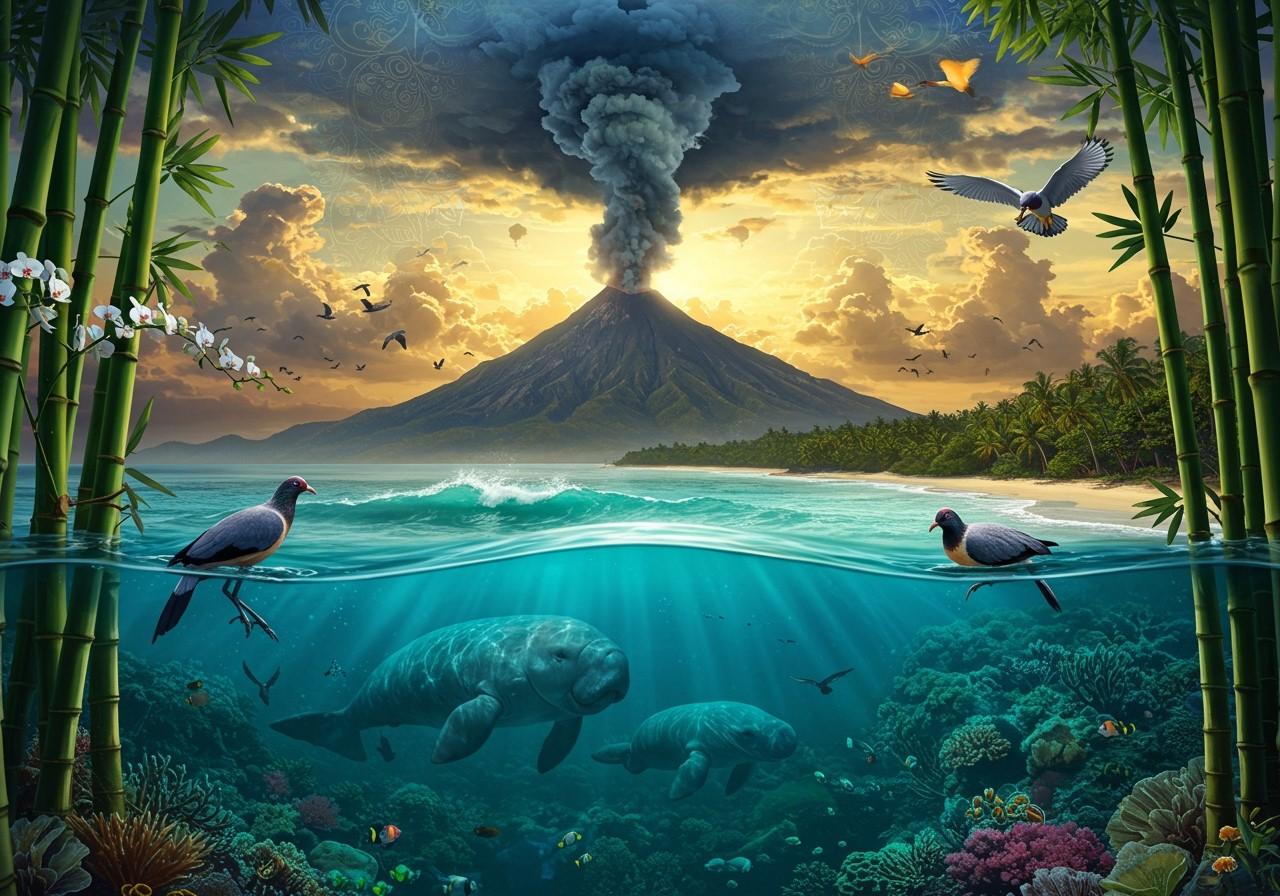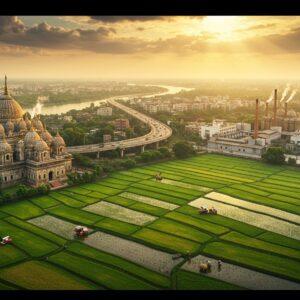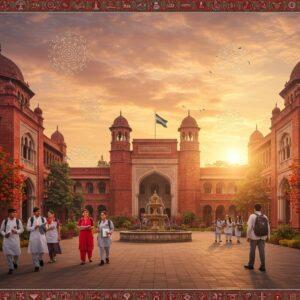
The Andaman and Nicobar Islands, a breathtaking archipelago nestled in the Bay of Bengal and Andaman Sea, offer a captivating blend of natural beauty and rich cultural heritage. Comprising 572 islands, with only 38 inhabited as of 2025, this destination is renowned for its pristine beaches, vibrant marine life, and exotic flora and fauna. Nature enthusiasts can explore the islands through activities like trekking and bird watching, often with guides available through the Forest Department. The Andaman and Nicobar Islands truly are an adventure seeker’s paradise, offering a travel experience unlike any other.
The Lush Flora of the Andaman and Nicobar Islands
The Andaman and Nicobar Islands boast an incredible diversity of plant life. Over 2,200 plant species thrive in this tropical haven, with approximately 200 unique to the islands. Tropical rainforests blanket the landscape, providing a habitat for rare and endemic species. Coastal mangrove ecosystems play a crucial role in protecting the islands from erosion and nurturing a rich marine environment.
The Andaman Padauk tree, prized for its beautiful grain, is a notable species and important to the local timber industry. The islands are also home to over 110 orchid species, including the stunning Andaman Lady’s Slipper orchid, a captivating sight for botanists and tourists alike. Indigenous communities play a vital role in preserving this botanical wealth, utilizing traditional knowledge for sustainable resource management. Conservation efforts by local and international organizations focus on protecting these delicate ecosystems from threats such as deforestation and climate change.
The Diverse Fauna of the Islands
The Andaman and Nicobar Islands teem with extraordinary wildlife, offering sanctuary to a myriad of unique species. The marine life is particularly vibrant, with colorful coral reefs supporting a variety of fish, sea turtles, and the elusive Dugong, the state animal. Birdwatchers can delight in spotting rare birds like the Andaman Wood Pigeon and the Nicobar Megapode, known for its unique mound-building nests.
On land, creatures like the Andaman Wild Boar and Nicobar Tree Shrew roam freely. The islands’ mangroves and freshwater bodies provide a haven for Saltwater Crocodiles, the world’s largest reptiles. The islands also serve as a crucial breeding ground for migratory birds, attracting ornithologists from around the globe. However, conservation challenges persist, including habitat destruction and poaching, as well as threats from invasive species. Protected areas and wildlife sanctuaries play a key role in safeguarding these precious species and their habitats.
Volcanic Origins and Landscapes
Volcanic activity has significantly shaped the landscapes of the Andaman and Nicobar Islands. Barren Island, home to South Asia’s only confirmed active volcano (as of 2025), draws the attention of geologists and adventurers. Historical eruptions have influenced the environment and biodiversity of the region. Narcondam Island, with its dormant volcano, adds to the islands’ geological allure, shrouded in myths and legends surrounding its formation. Volcanic activity has contributed to the rugged hills, serene beaches, and fertile soils that characterize these islands, with lava tubes and basalt cliffs creating dramatic and picturesque landscapes. Researchers continually monitor volcanic activity to understand its impact on communities and biodiversity, while safety measures ensure that tourists can explore these volcanic sites with confidence.
Cultural Significance and Indigenous Traditions
The cultural heritage of the Andaman and Nicobar Islands is deeply intertwined with the natural environment. Indigenous tribes like the Great Andamanese, Onge, and Nicobarese have lived in harmony with nature for millennia, their traditional practices reflecting the islands’ rich biodiversity. Nature serves as a powerful influence on local art, music, and folklore, offering visitors a unique cultural perspective. Festivals play a vital role in preserving cultural identity and fostering community spirit.
However, indigenous communities face challenges in preserving their cultural heritage amid modern influences. Sustainable tourism initiatives aim to support local economies while respecting cultural values. Visitors are encouraged to engage respectfully with local communities, gaining insights into their way of life and contributing to cultural preservation.
How Poojn.in Supports Your Spiritual Journey in Andaman & Nicobar
Poojn.in is proud to deliver essential puja items to the Andaman and Nicobar Islands, ensuring that residents and visitors can maintain their spiritual practices while exploring this natural paradise. We offer a variety of products tailored to the island environment:
- Complete puja samagri kits: Carefully packaged to withstand the humid island climate, these kits provide everything needed for traditional ceremonies.
- Brass and copper items with anti-corrosion coating: Specifically treated to resist the corrosive effects of the coastal environment, ensuring longevity and beauty.
- Eco-friendly puja items: Aligned with the islands’ commitment to environmental preservation, these sustainable options minimize impact on the natural surroundings.
For those venturing to the active Barren Island volcano or immersing themselves in the islands’ rich biodiversity, we recommend:
- Travel-sized compact puja kits: Convenient and portable, perfect for maintaining spiritual practices on the go.
- Coconut and betel nut offerings: Ethically sourced from certified suppliers, ensuring quality and supporting sustainable practices.
- Special Nariyal (coconut) puja items: Specifically designed for sea-related ceremonies, connecting with the islands’ maritime heritage.
Our Sitting Laddoo Gopal idols, available in various sizes including 10 No., are ideal for home temples in the islands. These idols are crafted from weather-resistant materials suitable for the tropical climate. We ensure reliable delivery to major areas, including Port Blair, Havelock Island, Neil Island, Little Andaman, and Car Nicobar. Visit poojn.in and enter your island PIN code for convenient delivery of authentic puja items, allowing you to maintain your spiritual connection while experiencing the islands’ natural splendor.
You can find a variety of products at poojn.in, such as nail polish for pooja, camphor, incense sticks, and rudraksh malas.
Embracing the Wonders of Andaman and Nicobar
The Andaman and Nicobar Islands are true treasures of natural and cultural beauty. Their rich wildlife, shaped by volcanic forces, and vibrant cultural heritage create a unique tapestry that invites exploration and respect. From the colorful coral reefs teeming with marine life to the ancient volcanic landscapes, the islands offer experiences that engage the senses and enrich the soul. When visiting, it’s crucial to remember the delicate balance between nature and human presence. Supporting conservation efforts and respecting local traditions are essential to ensuring that these wonders endure for future generations. By embracing sustainable tourism practices, we can enjoy the islands’ beauty while contributing to the protection of their incredible biodiversity and cultural heritage. As you plan your journey, let the spirit of the Andaman and Nicobar Islands inspire you. Discovering these natural wonders is not just about seeing new places—it’s about connecting with a world where nature and culture thrive together.
Frequently Asked Questions About Andaman and Nicobar’s Natural Wonders
What makes the flora of the Andaman and Nicobar Islands unique? The flora stands out due to its high number of endemic species found nowhere else on Earth. The tropical climate and isolated location nurture lush rainforests and contribute to the remarkable plant diversity. This makes the islands a hotspot for botanical research and exploration.
What makes the fauna of the Andaman and Nicobar Islands so special? The fauna is exceptional because of the presence of numerous rare and endangered species. The islands provide a habitat for unique birds, reptiles, and mammals specifically adapted to the island environment. This unique fauna contributes significantly to the islands’ ecological importance.
How do the islands’ volcanic origins influence their natural wonders? The volcanic origins have played a key role in shaping the islands’ rich biodiversity and unique landscapes. The fertile volcanic soil nourishes a variety of plant life, while the geological formations create breathtaking natural scenery. This combination of fertile land and dramatic landscapes creates a truly unique environment.
What types of volcanoes are found in the Andaman and Nicobar Islands? The islands are home to both dormant and active volcanoes. Barren Island, with its active volcano, is a significant geological feature in the region, attracting scientists and tourists alike. The presence of both types of volcanoes adds to the islands’ geological complexity and interest.
Are there specific plants that grow only in the Andaman and Nicobar Islands? Yes, numerous endemic plant species are found exclusively in these islands. These include unique orchids and other tropical plants that thrive in the islands’ specific climate and soil conditions. This high level of endemism highlights the islands’ biological importance.
How can visitors experience the islands’ unique fauna? Visitors can experience the fauna through guided tours, visits to wildlife sanctuaries, and engaging nature walks. These opportunities provide close encounters with the diverse and unique animal life, promoting appreciation for the islands’ biodiversity. Respectful observation is key to minimizing disturbance to these delicate ecosystems.
What conservation efforts are in place to protect the natural wonders of the Andaman and Nicobar Islands? Various conservation programs are dedicated to protecting the islands’ biodiversity. These include habitat preservation initiatives, wildlife protection laws, and efforts to promote sustainable tourism practices. These measures are essential to preserving the islands’ natural heritage for future generations.
Is it safe to visit the volcanic areas in the islands? Generally, it is safe to visit volcanic areas with guided tours. Tour operators prioritize safety by adhering to established guidelines and staying informed about volcanic activity reports. Responsible tourism practices ensure a safe and enriching experience for visitors while minimizing environmental impact.
Learn more about Indian temples and spiritual journeys with Poojn.in’s informative articles: Mahadev Temple, India’s Sacred Sites, Hindu Mythology, and Hinduism’s Relationship with Nature.


